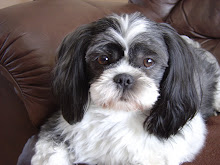

The Antlion is a member of the family Myrmeleontoidea. Interestingly, the term Antlion only applies to the larval form of this insect (see picture one.) Although the adult version has different names in different countries, there is no English name for them. Some people call them Antlion Lacewings, but most just refer to them by the larval name of Antlion. To prevent confusion, quite a few people in North America refer to the larval form as “Doodlebugs” because they leave a doodle like trail in the sand when they move from place to place. The Antlion is spread throughout the world and can usually be found in arid sandy areas that have ant colonies nearby.
The adult Antlions look a bit like Damselflies and Dragonflies, but they have different antennae than these more well known insects. Antlions have “clubbed” antennae (look like golf clubs) which are about as long as the head and thorax combined.
Antlion adults are poor fliers and only venture out near dusk when they flutter about looking for a mate. Those found in true desert areas are quite active and will bite if they land on you.
Although the adult Antlion is fairly attractive, the larval stage is quite ferocious looking. It has a robust fusiform body (spindle like body form that tapers at each end), a thorax with three sets of legs and a plump abdomen. The neck, or pro-thorax is quite slender and the head is large and appears to resemble a slightly flattened square. The head has large sickle-like jaws with several sharp hollow projections. The jaws are formed by the mandibles (lower jawbones), and the maxillae (located below the mandibles they manipulate food during chewing.) Each pincer, made up of a mandible and maxilla, encloses a canal which allows the larva to inject venom into its prey.
Another unusual feature of Antlion larva is that it lacks an anus. All of its waste generated during the larval stage is stored and then released as meconium (earliest stool) by the adult while it is still in the cocoon.
The larva makes a globular cocoon of sand stuck together by a fine silk which is spun from a slender spinneret on the back end of the body. The cocoon, which is buried in the ground, can be anywhere from just under the surface to several centimetres down in the sand. It remains there for about a month going from the larval stage to the pupal stage which is very quiescent (inactive) and then to the sexually mature adult stage, which digs its way up to the surface, leaving the pupal integument behind. Once it reaches the surface, it rests for about 20 minutes while its wings open and then it flies off looking for a mate. The cycle from egg to adult Antlion can take up to two to three years, depending on the availability of the food supply in the area where the insect is located. Another interesting feature of this insect is that the adult stage is very much larger than the larval stage.
The Antlion probably got its name from the fact that its primary prey is ants. The suffix “lion” means eater, so Antlion literally means “ant eater.”
The larva digs a pit in the sand and lurks in a hole in the bottom of the pit which is constructed with sides that are on the verge of collapse. When another insect, usually an ant, steps over the side of the pit, they slide down to the larva which grabs the ant and sucks the fluid out of it then the larva flicks the carcass out of the pit. As the larva grows larger, it builds larger pits and catches larger prey.
If you would like to have Antlions as pets, you will have to keep them in a terrarium with three to four inches of sand in the bottom. You can buy Antlions at some pet shops that specialize in exotic pets. Make sure that the top of your terrarium has a mesh fine enough to prevent the ant food supply from escaping.
An Antlion pet is not one you would handle, they are the type of pet you just spend time watching.
Until next time,
Teia







